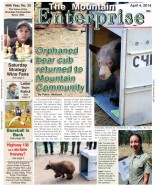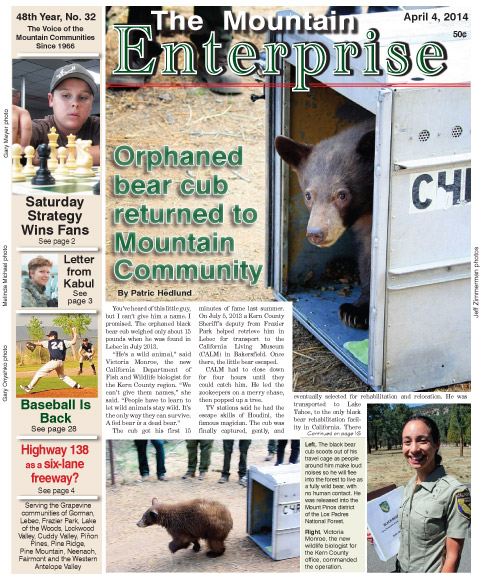By Gary Meyer
About 60 West Antelope Valley area residents and interested parties filed into Grace Chapel in Neenach on Tuesday evening, March 18 to hear Caltrans and Los Angeles County Metropolitan Transit Authority (Metro) explain the options for a proposal to possibly widen Highway 138, the 36-mile corridor between Interstate 5 and Highway 14.
The two agencies came to gather input on the Northwest 138 Corridor project, but did not ask for questions during the public presentation. Instead, they presented the basic project concept and asked attendees to use one of several ways to give comments, concerns and opinions about the project.
Civil Engineer Robert Blume, employed by Kimley-Horn and Associates, Inc. is under contract to Metro for helping to plan the project. He presented a range of five basic alternatives for the public’s consideration:
•No-Build Alternative—no changes to the existing roadway;
•An improved conventional highway—the existing two-lane highway would receive minor improvements;
•A four-lane expressway throughout the entire corridor, separated by a median;
•A six-lane freeway/expressway throughout the entire corridor, separated by a median;
•A traffic system or multi-modal system throughout the corridor which would employ methods to improve the existing highway without major construction.
The width of the project study area is 600 feet, although the width of each expansion alternative would be 200 feet. He said the six-lane alternative would use more space in the median than the four-lane, keeping both options at an overall width of 200 feet.
Blume described common features for alternative scenarios (in which the highway would not be widened) that include:
•Improvement of non-standard, existing features;
•Utility relocations;
•Improvements to I-5 and Highway 14 interchanges;
•Revisions to Highway 138 intersections and access;
•Drainage improvements;
•Enhancements for wildlife, pedestrian, equestrian and bicycle movements.
Asked after his presentation how private property owners might be affected in areas where a 200-foot width must encroach on their land, Blume hesitated to attempt a detailed explanation but did say that, “First, every attempt would be made to avoid having to encroach upon private property.”
Then he said there is a process by which an assessment of the property value would be made. There are legal parameters involved, he said, that would require fair-market value to be paid for any property where encroachment could not be avoided.
In cases where taking a portion of property needed for expansion might destroy the value of an entire property, the entire property may need to be purchased, he said. Blume said that very few areas would require such measures.
Metro Project Manager Teresa Wong said that the project’s environmental study is funded by Measure R, the Los Angeles County half-cent sales tax approved by voters in 2008. Funding for design and construction, however, has not yet been identified, she said.
Tammy Podesta, Senior Environmental Planner for Caltrans, said Caltrans is the lead agency for purposes of fulfilling California Environmental Quality Act (CEQA) and National Environmental Policy Act (NEPA) requirements.
She outlined an environmental review process that will take two years. These initial March 15 and 18 scoping meetings were part of that process.
The public comment period for the information presented at these scoping meetings ends on April 18.
Preliminary engineering, environmental studies and draft environmental impact reports follow. More public comment is solicited prior to a decision in 2016 about whether the project should proceed.
Complete information about the project can be found at www.metro.net/nw138, including a video of the March 15 scoping meeting held in Antelope Acres.
Public comments can be submitted via the website at www.metro.net/nw138 or via email at nw138@metro.net. The official comment sheet can also be viewed and printed here.
Photo captions
Robert Blume of Kimley-Horn and Associates, Inc. presented the project basics.
Sixty area residents signed in for the scoping meeting and enjoyed cookies and coffee provided by Grace Chapel.
The public comment period for the information presented at these scoping meetings
ends on April 18.
To see full stories with photos, please go to The Mountain Enterprise e-Edition
(login required)
You can have your newspaper delivered via mail and include internet access! Just call 661-245-3794.
Also, this story and others are available right now at newsstands throughout the Mountain Communities.
This is part of the April 4, 2014 online edition of The Mountain Enterprise.
Have an opinion on this matter? We'd like to hear from you.


